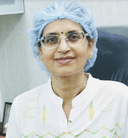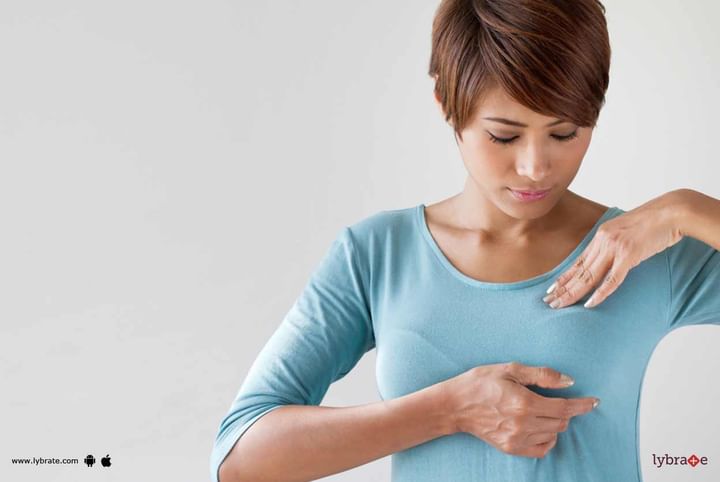Breast Awareness & Breast Cancer Screening - Know All Vital Information About It!
Breast awareness means to be aware of normal look and feel of your breast so that if there is any change, you can consult your doctor.
Why this concept –
Breast cancer is the commonest cancer among woman all over the world and now in India too. Older a woman gets the risk increases. The latest report says that 1 in 8 women in her lifetime will have the risk of developing cancer Breast. To pick up cancer Breast at the earliest, this concept has evolved. Concept of Breast Awareness includes three steps:
- To know the normal look and feel of breast and become familiar with the normal changes in your breast at different times of the month.
- See your doctor if you notice any unusual change.
- If you are aged 40 to 74 years then get a mammography every 2 years.
Self-examination of Breast-
- Breast self-exams may be done by women to check their breasts for lumps or other changes. Usually, it should be done on 5th day of menses because breast feels soft as compare to other days of the menstrual cycle or if menses have stopped then one can fix any date of the month and it should be repeated on the same date of following months. It is important to know how your breasts usually look and feel.
- Use a mirror to become familiar with the normal look and shape of your breasts.
- Always use pads of your fingers to feel the breast tissue. If you use the tip of your fingers then you may feel some lumpiness in a normal breast normal.
- Feel all the breast tissue, from collar bone to below the bra line and under the armpit. You can feel in a linear fashion from above downwards taking a small part of breast tissue each time or you can do in a circle initially making a big circle and then smaller circles till you come up to nipple area.
Changes to look for:-
- A lump especially in one breast.
- Changes in the size and shape of the breast.
- Skin changes like dimpling or redness.
- Changes in the nipple, such as inversion, redness or crusting.
- Nipple discharge, watery or red coloured.
If you notice any of these changes you should see your doctor as soon as possible. Most changes are not due to cancer but it is important to take notice of it so that one can detect breast cancer as early as possible, thereby preventing great suffering and saving many lives.
Breast Cancer Screening -
Breast screening has been shown to be helpful both in finding cancers early and in decreasing the chance of a woman dying from these cancers.
Three tests are used by health care providers to screen for breast cancer:
- Mammogram
- Clinical breast exam (CBE)
- MRI (magnetic resonance imaging) in women with a high risk of breast cancer
Mammogram -
- Mammography is the most common screening test for breast cancer. A mammogram is an x-ray of the breast. In this test, the breast is pressed between two plates. X-rays are used to take pictures of breast tissue.
- This test may find tumours that are too small to feel. A mammogram may also find ductal carcinoma in situ (DCIS), a type of Breast cancer. In DCIS, there are abnormal cells in the lining of a breast duct, which may become invasive cancer in some women.
- Mammograms are less likely to find breast tumours in women younger than 50 years than in older women. This may be because younger women have denser breast tissue that appears white on a mammogram. Because tumours also appear white on a mammogram, they can be harder to find when there is dense breast tissue.
- In such cases, Ultrasonography of the breast is a better alternative. Women aged 40 to 74 years who have screening mammograms have a lower chance of dying from breast cancer than women who do not have screening mammograms. The following may affect whether a mammogram is able to detect (find) breast cancer:
- The size of the tumour.
- How dense the breast tissue is.
- The skill of the radiologist.
Clinical breast exam (CBE) -
A clinical breast exam is an exam of the breast by a doctor or other health professional. The doctor will carefully feel the breasts and under the arms for lumps or anything else that seems unusual. It is not known if having clinical breast exams decreases the chance of dying from breast cancer.
Magnetic Resonance Imaging (MRI) -
MRI (magnetic resonance imaging) in women with a high risk of breast cancer. MRI is a procedure that uses a magnet, radio waves, and a computer to make a series of detailed pictures of areas inside the body. This procedure is also called nuclear magnetic resonance imaging (NMRI). MRI does not use any x-rays. MRI is used as a screening test only for women who have one or more of the following:
- Certain gene changes, such as in the BRCA1 or BRCA2 genes.
- A family history (first degree relative, such as a mother, daughter or sister) with Breast cancer. screening tests are being studied in clinical trials.
Thermography -
Thermography is a procedure in which a special camera that senses heat is used to record the temperature of the skin that covers the breasts. A computer makes a map of the breast showing the changes in temperature. Tumours can cause temperature changes that may show up on the thermogram. There have been no clinical trials of thermography to find out how well it detects breast cancer or if having the procedure decreases the risk of dying from breast cancer. Tissue sampling Breast tissue sampling is taking cells from breast tissue to check under a microscope. Abnormal cells in breast fluid have been linked to an increased risk of breast cancer in some studies. Scientists are studying whether breast tissue sampling can be used to find breast cancer at an early stage or predict the risk of developing breast cancer. Three ways of taking tissue samples are being studied:
- Fine-needle aspiration / True cut needle biopsy: A thin needle is inserted into the breast tissue around the areola (darkened area around the nipple) to take out a sample of cells and fluid. In true cut biopsy, a thin stip of tissue is taken out with a true cut needle.
- Nipple aspiration: The use of gentle suction to collect fluid through the nipple. This is done with a device similar to the breast pumps used by women who are breast-feeding.
- Ductal lavage: A hair-size catheter (tube) is inserted into the nipple and a small amount of salt water is released into the duct. The water picks up breast cells and is removed. Screening clinical trials are taking place in many parts of the country for breast cancer.



+1.svg)
